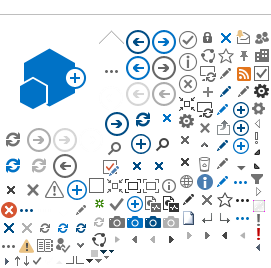Financial Services Authority, Jakarta,
September 11, 2014: Financial
Services Authority (OJK) considered that development and risk profile in
financial services industry was generally in good condition. That is the
conclusion of OJK Board of Commissioners` monthly meeting, which has been held
routinely every second week of each month in order to evaluate the development
and risk profile in financial services industry.
Globally, economic recovery in developed
countries still continued although unevenly. It must be taken into
consideration about the continuing side effect of policy normalization in the
United States of America (U.S.) on emerging market. Global economic recovery
continued with different swiftness. Economic indicators in the US showed a
strong recovery, whereas those in Europe, Japan, including China indicated a
growth deceleration. Improvement in employment indicator in U.S. has aroused
speculation on interest acceleration, which will probably be implemented in
first semester of 2015. This shift of policy stance contains spillover implications
in the form of investor`s risk off from emerging market, which potentially will
inflict inversion of capital flow in financial market in the emerging market,
including in Indonesia. Economic deceleration in emerging market is estimated
to continue, and this might cause spreading side effect in a global scope.
The impact of global economic deceleration
has influenced Indonesia`s domestic economy, i.e. a deceleration of economic
growth during second quarter of 2014, which occurred in all components of
expenditure. Household consumption and investment still grew although with a
slow down. Meanwhile, contraction occurred in government consumption, export
and import. Deficit of ongoing transaction in second quarter of 2014 widened,
despite that Indonesia`s balance of payment account (NPI) recorded a surplus,
backed by capital and financial transactions, and on the other side, inflation
was still maintained but there was additional potential pressure.
As for banking condition, capitalization was
quite high with capital adequacy ratio (CAR) at 19.39%, dominated by
core capital component (Tier 1). Rentability was stable with a slight tendency
to decrease, indicated by a relatively stable return on assets (ROA). Whereas operational
cost and operational income (BOPO) relatively increased when compared to that
of previous period.
Stock
exchange condition enhanced, followed by the increasing month-to-month net
asset value of mutual fund. The increasing net asset value was originated from
an increase in investment portfolio by Rp 289 billion and in net subscription by Rp 721 billion. The
biggest net subscription occurred in protected mutual fund with a value of Rp
708 billion, while mutual fund and money market recorded the biggest net
redemption, reaching Rp 704 billion.
Investment value of insurance and pension fund as of
July 2014 showed an increase compared to previous month, which is in line with
market improvement during the month.
Investment value of pension fund was at Rp 170.5 trillion, an increase of 1.3% compared to previous month. Investment value of
insurance (including BPJS, or Social Security Management Agency) was recorded
at Rp 643.7 trillion or an
increase of 11.4% compared to previous month.
Liquidity risk in banking was in stable condition and
at a relatively low level of risk. Liquidity tools were quite sufficient to
anticipate potential withdrawal of third party fund.
However, there was
potential increase of liquidity risk in accordance with the increasing loan
deposit ratio (LDR), dependency to non-core funding, and ratio of core
depositors that remained relatively high. In capital market, the value and
frequency of stock trading in August decreased when compared to previous month,
given the fact that market sentiment was decreasing while bid-ask spread showed
a constriction.
Risks in financial services institutions were
generally at a relatively low level. Credit risk in banking was reasonably low,
credit quality was stable, indicated by non-performing loan (NPL) that was low
and stable.
However, the portion of low quality credit and credit concentration
in core debtors that was relatively high, along with the increasing interest
rate, require some attention as they might potentially increase NPL. Another
subject that requires attention is about a worsening quality in several kinds
of credit that are sensitive to interest rate changes, which brings influence
to a hike of credit risk. As for condition in finance companies as of July
2014, financing to asset ratio (FAR) increased, while non-performing financing
(NPF) decreased when compared to previous month. Despite the improving conditions,
we need to remain cautious over potential increase of interest rate.
For more information:
Lucky F.A.
Hadibrata, Deputy Commissioner
IB for Strategic Management, OJK.
Phone: 021-3858001, Email: lucky.fathul@ojk.go.id/www.ojk.go.id
